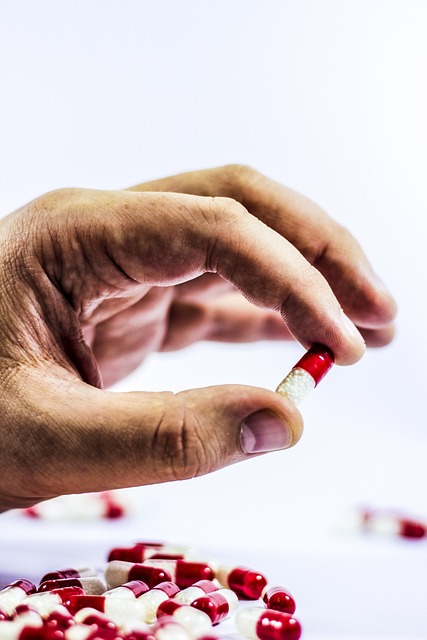GLP-1 receptor agonists (GLP-1 RAs), revolutionary medications mimicking the natural hormone GLP-1, transform type 2 diabetes management. They enhance insulin secretion and suppress glucagon release for improved glycemic control while offering weight loss benefits and a lower risk of hypoglycemia. Despite common side effects like gastrointestinal issues, patient testimonials highlight significant improvements in blood sugar control and quality of life. Ongoing research focuses on enhancing delivery methods and minimizing adverse effects, with future prospects including long-acting formulations, extended duration drugs, personalized medicine, and synergistic combinations with other treatments.
GLP-1 receptor agonists have emerged as a powerful tool in diabetes management, offering a unique approach to blood sugar control. This article delves into the world of GLP-1 drugs, exploring their mechanism of action, potential benefits, and challenges from a patient’s perspective. From understanding these therapies’ role in diabetes treatment to examining real-life experiences through patient testimonials, we uncover the intricacies of GLP-1 receptor agonist therapies. Discover how these innovative drugs are shaping the future of diabetes care, providing hope for improved patient outcomes.
Understanding GLP-1 Receptor Agonists: Their Role in Diabetes Management

GLP-1 receptor agonists (GLP-1 RAs) are a class of medications designed to mimic the effects of the natural hormone GLP-1, which plays a crucial role in regulating blood sugar levels. These drugs have emerged as a game-changer in diabetes management, particularly for type 2 diabetes. By stimulating GLP-1 receptors, they enhance insulin secretion when blood glucose is high and suppress glucagon release, helping to lower blood sugar.
GLP-1 RAs are considered a more natural approach compared to other diabetes medications, as they work with the body’s existing mechanisms. They offer several benefits, including improved glycemic control, weight loss, and reduced risk of hypoglycemia. This makes them an attractive option for patients, often leading to better overall management of their condition and an enhanced quality of life. The rise in popularity of GLP-1 drugs reflects their significant potential in transforming diabetes care.
The Mechanism of Action: How These Drugs Lower Blood Sugar

GLP-1 receptor agonist therapies are a game-changer in managing type 2 diabetes. These drugs mimic the effects of the natural hormone GLP-1, which is produced in the gut in response to food. By binding to specific receptors in the pancreas and brain, GLP-1 drugs stimulate insulin secretion when blood sugar levels are high, helping to lower glucose quickly and effectively.
Additionally, they slow down gastric emptying, leading to a feeling of fullness and reduced appetite. This dual action not only improves glycemic control but also aids in weight management, making them a valuable tool in the diabetes treatment arsenal. The mechanism of action sets GLP-1 drugs apart from other anti-diabetic medications, offering a more natural approach to blood sugar regulation.
Common Side Effects: What Patients Can Expect

When beginning GLP-1 receptor agonist therapies, patients often experience a range of common side effects that can vary in severity. These drugs, used to manage type 2 diabetes and aid in weight loss, stimulate insulin production and suppress glucagon release, which can lead to symptoms like nausea, vomiting, diarrhea, and abdominal pain. These gastrointestinal issues are typically more pronounced during the initial weeks of treatment but tend to lessen over time as the body adjusts.
Other possible side effects include dizziness, headache, and changes in appetite. Some patients may also experience low blood sugar levels (hypoglycemia), although this is less common with GLP-1 drugs compared to other diabetes medications. It’s important for patients to be aware of these potential side effects and to discuss any concerns or persistent symptoms with their healthcare provider. Regular monitoring can help manage these effects, ensuring a smoother transition into GLP-1 drug therapy.
Patient Testimonials: Real-Life Experiences with GLP-1 Drugs

Patient testimonials offer a unique and powerful perspective on the real-life experiences with GLP-1 drugs. Many patients share their stories, highlighting the significant improvements in their blood sugar control and overall quality of life. These medications have been transformative for some, leading to better management of type 2 diabetes and even weight loss.
The positive feedback from users underscores the potential of GLP-1 drugs in revolutionizing diabetes care. Patients often praise the convenience of these therapies, which can be administered through injections or oral tablets, making them user-friendly compared to traditional insulin regimens. Moreover, some patients report reduced hunger and increased satiety, contributing to their weight management goals.
Benefits and Challenges: A Comprehensive Look at Treatment Outcomes

GLP-1 receptor agonist therapies have shown significant promise in managing type 2 diabetes, offering a range of benefits for patients. These drugs mimic the effects of the natural hormone GLP-1, stimulating insulin production and suppressing glucagon release, leading to improved blood sugar control. This approach not only helps in glycemic management but also provides additional advantages, such as weight loss and reduced cardiovascular risks, making it a comprehensive treatment option.
However, like any therapeutic intervention, GLP-1 drugs come with challenges. Common side effects include gastrointestinal issues like nausea, vomiting, and diarrhea, which can impact patient adherence to the treatment regimen. Furthermore, some patients may experience more severe allergic reactions or hypoglycemia when starting these therapies. Despite these challenges, ongoing research continues to explore ways to optimize GLP-1 drug delivery and minimize adverse effects, aiming to enhance overall patient experiences and treatment outcomes.
Future Perspectives: Innovations in GLP-1 Therapy for Improved Patient Care

As research continues, future perspectives for GLP-1 receptor agonist therapies look promising, with a focus on improving patient care and outcomes. Innovations in drug delivery systems are at the forefront, aiming to enhance convenience and adherence to treatment. For instance, developing long-acting formulations could reduce the frequency of injections, improving patient compliance and quality of life. Additionally, novel GLP-1 drugs with extended durations of action may offer once-weekly or even once-monthly dosing intervals, simplifying management for both patients and healthcare providers.
Personalized medicine approaches are another exciting direction, where treatments can be tailored to individual patient needs. This includes identifying predictive biomarkers that could help select the most effective GLP-1 drug regimen for each patient, minimizing trial-and-error prescribing. Furthermore, combining GLP-1 therapies with other metabolic agents or lifestyle interventions could provide synergistic effects, leading to better glycemic control and reduced cardiovascular risk.
